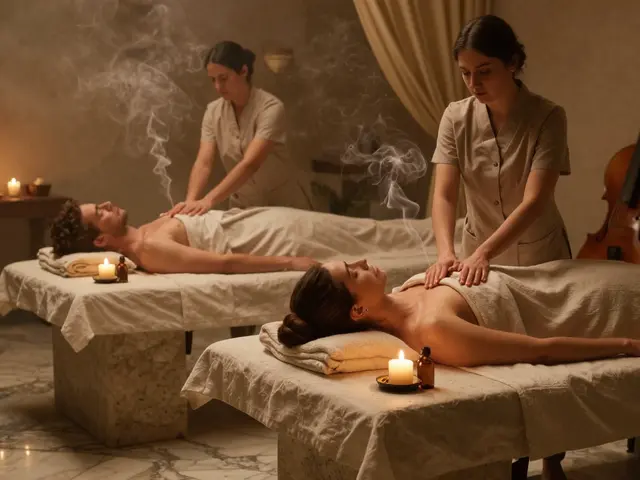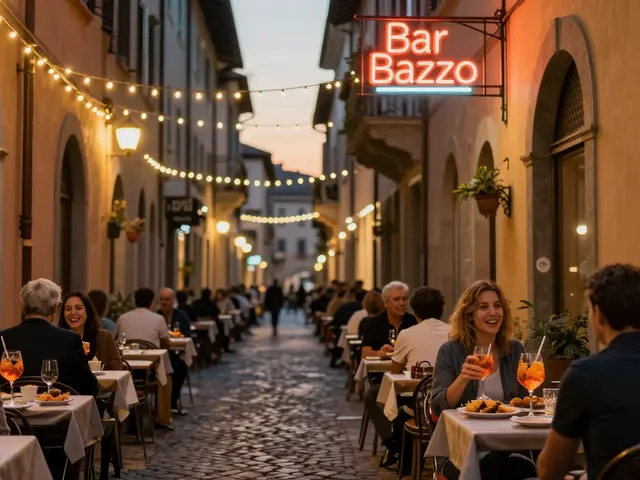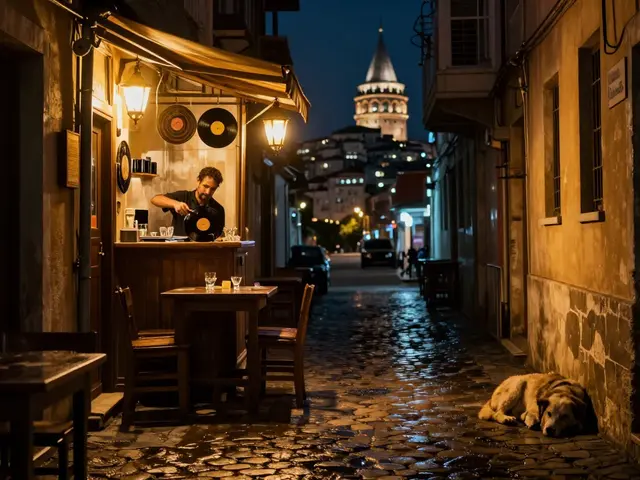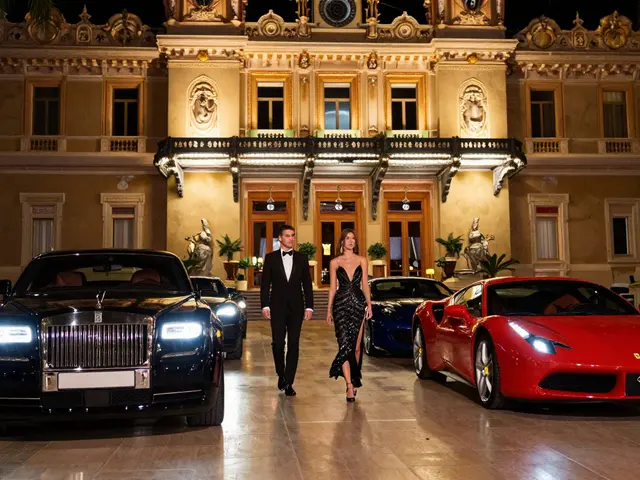When the sun goes down in Milan, the city doesn’t sleep-it pulses.
Forget what you think you know about Milan being all about fashion shows and designer boutiques. By 10 p.m., the real Milan emerges: dimly lit cocktail lounges, underground techno dens, rooftop bars with skyline views, and historic wine bars where locals sip Amarone like it’s water. This isn’t just partying. It’s a cultural ritual, woven into the city’s DNA since the 1950s.
Brera: Where Cocktails Meet Art
If you want to start the night with class, head to Brera. This neighborhood feels like a Renaissance painting come to life-cobblestone streets, ivy-covered walls, and galleries tucked between cafés. But the real magic happens after dark. Trendy bars here aren’t loud or flashy; they’re intimate, thoughtful, and built for conversation. Try Bar Basso, where the Americano was invented in 1919. Order one neat, with a slice of orange, and watch the mixologists work like surgeons. The crowd? Designers, artists, and expats who’ve lived here long enough to know the difference between a good gin and a great one. Don’t expect DJ beats. Expect jazz, low lighting, and the clink of ice in crystal glasses.
Navigli: Canals, Craft Beer, and Late-Night Eats
Just south of the city center, the Navigli district turns into a liquid party zone after sunset. The canals, once used for transporting goods, now float with lantern-lit boats and people leaning over railings with craft beer in hand. Beer & Co. is the go-to for locals who want something beyond prosecco. They serve over 50 rotating Italian craft brews, from hoppy IPAs brewed in Bergamo to dark lagers with hints of chestnut. Walk a few steps to Trattoria da Baffo for panzerotti fried to order and truffle arancini. This is where Milanese people unwind after work-no pretense, no VIP lists, just good food, cold beer, and the sound of water lapping against stone.
Porta Venezia: The City’s Most Diverse Nightlife Hub
Forget the tourist traps. Porta Venezia is where Milan’s real soul lives. It’s a melting pot of cultures, and that shows in the nightlife. One block, you’re sipping natural wine at Bar Basso’s younger sibling, Bar Luce, designed by Wes Anderson. The next, you’re dancing to Afrobeat at La Cucina, a converted warehouse with a backyard garden and a sound system that shakes your ribs. The crowd here is young, queer, and unapologetically themselves. You’ll find students from Bocconi University next to drag performers from Berlin, all sharing a table of cicchetti. This isn’t a scene you book ahead for. You stumble into it, and it feels like home.
Clubs That Define Milan: From Underground to Glamour
When it comes to iconic clubs, Milan doesn’t do halfway. La Scala isn’t just an opera house-it’s the name of a legendary club tucked behind a nondescript door in the Zona Tortona district. Inside, the walls are lined with vintage posters, the floor is sticky with spilled gin, and the music? Pure techno, no filters, no pop remixes. It’s been running since 1992, and the bouncer still checks your vibe before letting you in. Then there’s Magazzini Generali, a massive industrial space that turns into a multi-room dance floor every Friday. Think industrial architecture, laser projections, and DJs flown in from Berlin, Tokyo, and Detroit. You don’t go here to be seen. You go here to lose yourself.
The Rooftop Scene: Views That Make You Forget You’re in a City
Some nights, you don’t want to dance. You want to sit. To watch. To feel the city breathe beneath you. That’s where the rooftops come in. Terrazza Aperol at the Four Seasons is the classic pick-sparkling lights, skyline views, and aperitivo carts rolling around with spritzes and crostini. But if you want something less polished, try Top of the Gate on the 25th floor of the Unicredit Tower. It’s not fancy. The chairs are mismatched. The music is indie rock. But the view? You can see the Duomo, the Galleria, and the Alps on a clear night. Locals know this spot. Tourists don’t. That’s why it’s the best.
When to Go, What to Wear, and How to Avoid the Traps
Milan’s nightlife doesn’t follow the rules of other European cities. You won’t find 20-year-olds cramming into clubs at midnight. The rhythm here is slower. Bars open around 8 p.m., but the real energy kicks in after 11. Clubs don’t fill up until 1 a.m., and most don’t close before 5 a.m. Dress code? It’s flexible, but not casual. No sneakers, no hoodies, no baseball caps. Think dark jeans, a sharp jacket, or a simple dress. You don’t need to look like a model-just like you care. Avoid places that advertise “free entry” on Instagram. Those are usually tourist traps with overpriced drinks and no atmosphere. Stick to places locals frequent. Ask a bartender. They’ll point you to the real spots.
Secret Spots Only Locals Know
There’s a hidden speakeasy behind a bookshelf in a quiet alley near Piazza Cordusio. No sign. You need a password. Get it from the barista at Caffè della Spiga before 7 p.m. Then there’s Il Clandestino, a jazz bar in the basement of an old bank. No website. No Instagram. Just a phone number you get from a friend. And on Saturday nights, a group of musicians gather at a private apartment in Porta Romana. They play live blues, and you’re invited if you show up with a bottle of wine. These aren’t listed on Google Maps. They’re passed down like family recipes.
What to Drink, What to Skip
Milan invented the aperitivo. That means drinks come with food. A €12 spritz at Bar Basso gets you a buffet of bruschetta, olives, mini sandwiches, and even risotto balls. Don’t skip it. It’s not a gimmick-it’s tradition. Skip the cocktails labeled “Milanese Sunset” or “La Dolce Vita.” They’re syrupy and overpriced. Instead, try a Negroni Sbagliato (it’s made with prosecco instead of gin), or a classic Americano. For beer lovers, look for Birra del Borgo or Baladin. For wine, ask for a glass of Franciacorta-it’s Italy’s answer to Champagne, made right outside the city.
Why Milan’s Nightlife Stands Out
It’s not just about the music or the drinks. It’s about the rhythm. Milan doesn’t rush. It doesn’t chase trends. It evolves. A bar that opened five years ago might still be packed tonight because it got the little things right-the lighting, the playlist, the way the bartender remembers your name. This is nightlife that feels lived-in, not staged. You don’t come to Milan to party. You come to belong, even if just for one night.
What’s the best night to go out in Milan?
Friday and Saturday are the peak nights, especially for clubs. But if you want a more local vibe, try Thursday. Many bars host live music or themed aperitivos, and the crowds are thinner. Sunday nights in Navigli are surprisingly lively too-locals unwind after the weekend with low-key drinks by the canal.
Is Milan nightlife safe at night?
Yes, Milan is one of the safest major European cities for nightlife. Stick to well-lit areas like Brera, Navigli, and Porta Venezia. Avoid walking alone through deserted industrial zones after 3 a.m. Most clubs have security, and taxis are easy to find. Uber and FreeNow work reliably here.
Do I need to reserve a table at Milan bars?
For rooftop bars and popular spots like Terrazza Aperol, yes-book ahead, especially on weekends. For neighborhood bars and clubs, no. Just show up. The best places don’t take reservations. They let the night decide who gets in.
How much should I budget for a night out in Milan?
A good aperitivo with food costs €12-€18. Cocktails run €14-€20. Club entry is usually free before midnight, then €10-€20 after. If you’re doing a full night-bar, dinner, club-you’ll need around €60-€100. Skip the touristy spots near the Duomo-they’ll charge you €25 for a soda.
Are there any age restrictions for clubs in Milan?
Most clubs require you to be 18 or older. Some high-end venues like Magazzini Generali enforce a 21+ rule, especially on weekends. Always carry ID. Even if you look older, bouncers will ask.




